Combining Tradition & Creativity this Christmas
In its simplest form, a wreath is a circular arrangement of materials, and its history is as rich and diverse as the traditions it embodies. Crafting your own Christmas wreath is a delightful way to infuse personal creativity into this centuries-old tradition.
The term 'wreath' finds its roots in the old English word 'writhen,' meaning to writhe or twist.
Wreaths have a storied history dating back to the ancient Etruscan, Greek, and Roman civilisations. The Advent or Christmas wreath originated with Lutherans in 16th-century Germany. The first modern version, crafted in 1839 from a cartwheel, aided children in counting down to Christmas.
Initially placed on stands or tables in churches, Advent wreaths became a household tradition, particularly in Britain during the 19th century. Inspired by Prince Albert and Queen Victoria's embrace of European Christmas traditions, people began hanging wreaths from their doors in the festive lead-up.
Traditional Christmas wreaths, made from holly, red berries, and evergreen leaves (or synthetic alternatives), symbolise God’s strength, eternal life, and unending love due to their circular shape. Some also connect these materials to the crown of thorns worn by Jesus and the drops of blood they drew. However, contemporary Christmas wreaths explore diverse materials, introducing alternative meanings and symbolism beyond the conventional elements.
Craft your own traditional wreath
Crafting your own Christmas wreath not only allows for a personalised touch but also serves as a meaningful and enjoyable festive activity. Whether you choose to follow tradition with holly and evergreen or venture into more eclectic materials, your wreath will become a symbol of creative expression in your home.
Techniques for creating a traditional Christmas wreath differ slightly, but the following instructions provide a good basic guide. If you can’t find all the natural materials you need in your garden, ask friends and neighbours if they have anything they could give you.
Materials
- A wreath ring – you can opt for ones made of natural materials or metal and of varying sizes (see if your local garden centre of florist can donate them)
- A pair of secateurs or strong scissors
- Evergreen foliage – holly (with berries if you like), conifer, and pittosporum or similar are best
- Some brown bits of dead conifer and/or non-crunchy fallen leaves (optional)
- Pine cones (optional)
- Pliable reel wire – preferably green if you can get it
Instructions
1. Make a foliage bunch by snipping off small bits of each type of foliage and holding the stems together. Do not incorporate the pine cones at this stage.
2. Make a small hook in the end of your reel wire, lay it alongside the stems to hold them in place, and then wind the wire tightly around the stems and snip it, leaving a tail at the end. The tightness of the wire is very important.
Note: It is easiest to make several bunches at the start rather than as you go so that you can make them look similar for a uniform look all the way around the wreath.
3. Wind the end of the reel wire around the wreath ring and then twist it a few times to secure it tightly.
4. Lay one of your bunches onto the ring and tightly wind the reel used in step three around over the top of the stems a few times, tethering it to the ring.
5. Take a second bunch and repeat step four. Repeat until all your bunches are secure. Fix each new bunch further around the ring, use the same continuous reel of wire, and make sure the bunches overlap slightly. Ideally, there should be no visible space left on the ring for more bunches.
6. Once all your bunches are tethered to the ring, snip the wire leaving a short tail. Twist the tail around a few times (you can also wind it around the wreath if it is long enough, taking care not to crush or break the foliage bunches) to secure the end and make it safe.
7. If you are using pine cones, tightly wind some wire around between the scales a few times and snip the wire leaving a tail. Push the tail through the ring and wind it around tightly to secure it, taking care not to crush or break the foliage bunches. It’s nice to group the cones together in groups of two or three.
8. Push another piece of wire through the ring and then around the top a few times, taking care not to crush or break the foliage bunches. Snip the wire to leave a tail, and then use it to hang your wreath.
The steps above are followed in this RHS video on YouTube, which also has some nice Christmassy music to get you in the mood!
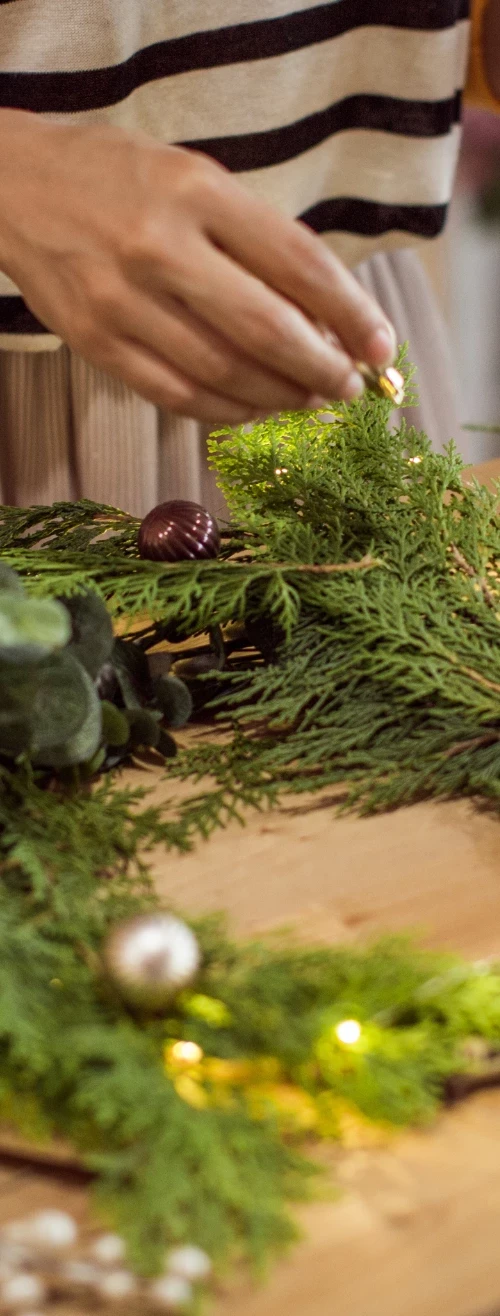
Alternative Wreath Ideas
There’s no limit to the sorts of materials you can use to make a wreath. Perhaps you could choose something that represents a hobby you enjoy? Could you use colour and sparkle to add a bit of festive cheer to your houses or home? Or maybe you could incorporate some treasured possessions so that it represents your personality or a special memory? Don’t forget, most of the things you use can easily be reclaimed if you dismantle your wreath afterwards.
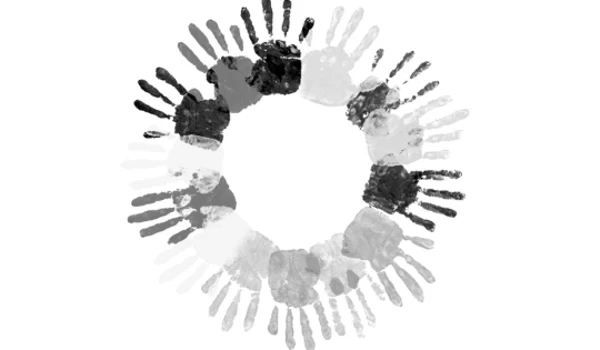
Community wreaths
Consider adding handprints from each family member, transforming your wreath into a visual representation of the collective warmth and togetherness. Another heartwarming idea is to include photos of family members' faces, creating a sentimental display that celebrates the smiles, laughter, and memories shared throughout the year.
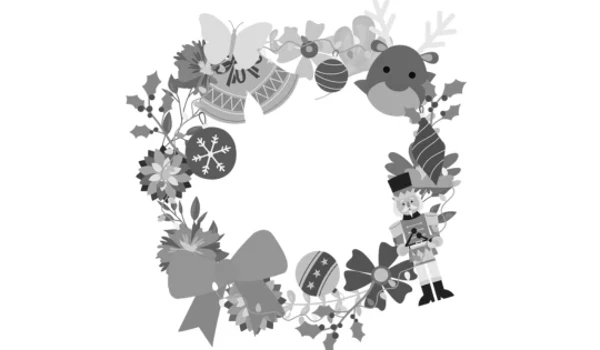
Make something kitsch
For those who want to have something particularly garish, tacky or tongue-in-cheek – ‘kitschmas’ is recognised by many people nowadays. Think tinsel, brightly coloured baubles, fairy lights, oversized ornaments, glitter, jingle bells, knitted pom-poms, fake flowers, toys (perhaps the grandchildren have some old ones they could donate), party hats, sweets – the list is endless!
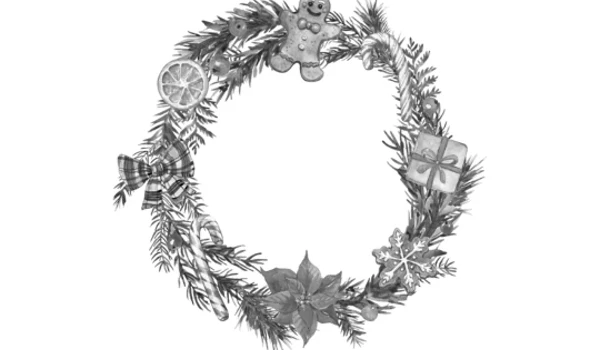
Use sustainable or recycled materials
You could re-use old Christmas ornaments or other objects you have lying around. Left-over wrapping paper, last year’s Christmas cards and knitting wool and can be turned into something that you might want to add to a wreath – maybe some origami stars or knitted nativity figures?
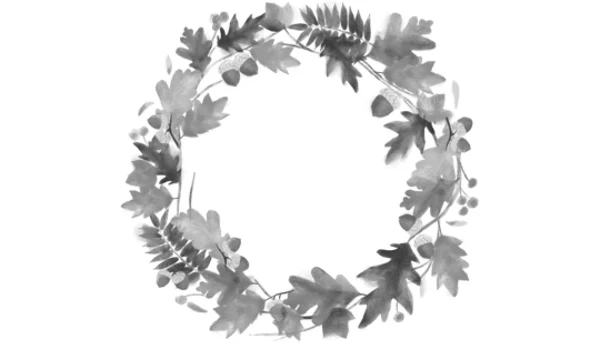
Use natural materials
There are plenty of things you could use in wreaths that you can find in your garden or around the local streets - you could help gather these and, if necessary, you can dry them out before they are used. The Woodland Trust has created a guide for foraging for natural materials to make wreaths and other Christmas decorations.
Get hooked by this knitted Christmas bauble
Bring some joy to your Christmas tree with this wonderful knitted bauble. Follow our pattern to create your own.
Knit a Christmas bauble

24 reasons why we love Christmas at Abbeyfield
We wanted to know what our lovely residents, staff, volunteers and people from our communities who use our services, loved about Christmas at Abbeyfield, so we asked them to tell us their favourite thing about the festive period and what makes it special for them.
Create your own Angels & Stars this Christmas
Have fun making prints that can be used for cards, decorations and gifts using recycled materials. This wonderful activity is a lovely way to reuse and upcycle packaging and paper.
Create your own angels and stars
